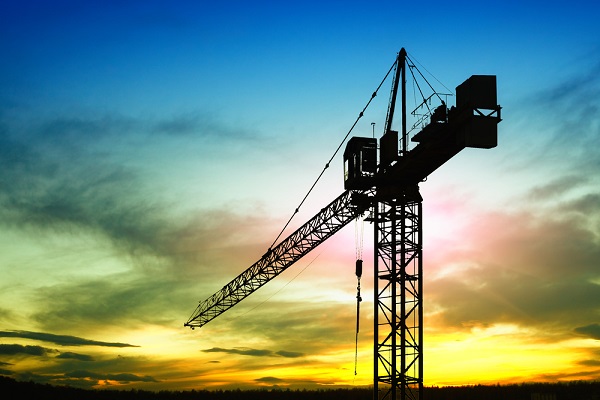Top 3 Challenges Impacting Builders Risk Market

By: Erin Rotz
Supply chain disruption, inflation and an increase in extreme weather continue to affect the property insurance market and policyholders—personal and commercial—need to be aware of how these separate yet intertwined issues impact their builders risk coverage.
1) Supply Chain Issues
Supply chain challenges have eased over the past several months. However, as materials sitting in ports have finally been unloaded and put on trucks for transport, some specific building supplies continue to be delayed for many contractors. This is creating new and unforeseen circumstances for building projects that were originally underwritten and priced by an insurance carrier.
The delay in receiving key materials can lead to a contractor potentially seeking alternative materials that were not originally contemplated in the design. Or, they may be forced to secure temporary materials to protect the property from being damaged by a covered cause of loss.
These alternative or temporary materials can unexpectedly increase the costs of the project, while the delay in receiving appropriate materials can also lead to contractors having to re-sequence activities, which may not be easily achieved due to the shortage of skilled labor.
For example, consider an office building under construction that has interior buildouts scheduled after the roofing system is put in place. The roofing materials are delayed. This impacts the framing contractors, who will then impact the schedule of the electrical contractors and the drywall contractors. And as skilled labor shortages plague the construction industry, the drywall contractors may have less flexibility to amend their schedules and accommodate the overall delay to this office project that all began with the delay in one key component: roofing materials.
Further, the insured may then have to consider securing a different drywall subcontractor if the original subcontractor can’t amend their schedules, or the insured may just have to push their office project finish date later than originally anticipated.
The project is now potentially going to have increased values, re-sequencing of work leading to unexpected exposures, and a longer timeline to build, which will impact the builders risk exposures and the cost of insurance.
In addition, the shortage of key materials can also have an impact if a covered cause of loss damages materials already received, thereby forcing replacement materials to be ordered.
2) Rises in Inflation
Inflation is another variable causing insurance to value discrepancies. The building cost index is up 9.9% and the materials cost index is up 19.4% over 2021, according to a report by Engineering News-Record’s Construction Economics.
While this is primarily driven by the supply chain, it is also impacted by indirect costs such as fuel and increased removal fees for items including dirt, debris and equipment. Insurers are ultimately paying more than was originally anticipated to make an insured whole, which leads to increasing loss costs.
A typical builders risk policy is equipped with an escalation clause, originally designed to contemplate minor change orders frequently occurring during the lifecycle of a project. Today, however, insureds and agents are leaning on increased escalation clauses to provide a buffer for materials that may cost more to replace due to inflation.
However, from an insurance carrier’s perspective, builders risk policy premium is calculated on the completed total insurance value of the project being insured, so it is expected that the escalation clause is not used for purposes of bridging the gap created by inflation in the cost of materials.
3) Natural Disasters
Natural catastrophes are happening more frequently, more intensely, in a broader range of areas, and for an increased number of perils than has happened in the past. As a result, more thorough and heightened analysis of severe weather events is becoming part of the underwriting process and incorporated at higher levels within insurance organizations.
Hurricane Ian wreaked havoc on the Southeast U.S., impacting the personal lines sector in particular, and 2022 was the most active wildfire season in more than 10 years, according to the National Interagency Fire Center.
Further, winter storm is a new catastrophe peril being analyzed because it has drastically impacted bottom line financials for insurance carriers in recent years. The Texas freeze of 2021, where a polar vortex shut down the Texas electrical system grid, caused enormous property damage and will result in updated building codes and revisions to contingency plans for many.
Each time a natural catastrophe event occurs, manufacturing businesses in the impacted areas are unable to produce, further exacerbating supply chain problems.
While the property insurance market continues to adapt to these new and sometimes unpredictable insurance challenges, it becomes critical for all insureds, agents and insurance carriers to partner and learn how they can collectively understand and avoid pitfalls that might prevent an otherwise unhappy outcome.
Erin Rotz serves as Head of Inland Marine & Builders Risk at The Hartford. She earned her Bachelor of Sciences in Business Administration with a minor in Risk Management from Illinois State University. She holds her CRIS designation and is a member of the Arizona Worker’s Compensation Appeals Board.
The information provided in these materials is intended to be general and advisory in nature. It shall not be considered legal advice. The Hartford does not warrant that the implementation of any view or recommendation contained herein will: (i) result in the elimination of any unsafe conditions at your business locations or with respect to your business operations; or (ii) be an appropriate legal or business practice. The Hartford assumes no responsibility for the control or correction of hazards or legal compliance with respect to your business practices, and the views and recommendations contained herein shall not constitute our undertaking, on your behalf or for the benefit of others, to determine or warrant that your business premises, locations or operations are safe or healthful, or are in compliance with any law, rule or regulation. Readers seeking to resolve specific safety, legal or business issues or concerns related to the information provided in these materials should consult their safety consultant, attorney or business advisors. All information and representations herein are as of November 2022.










